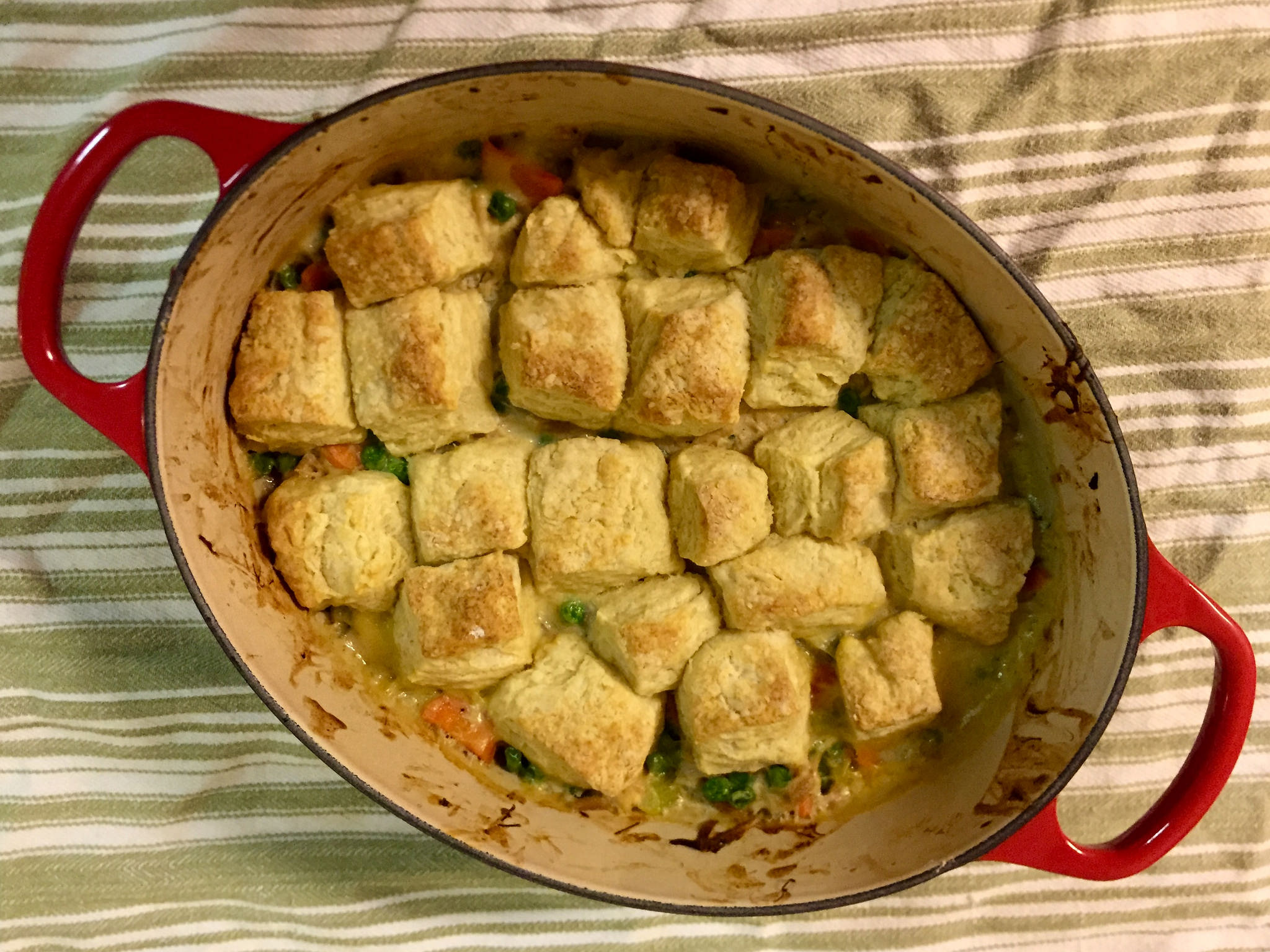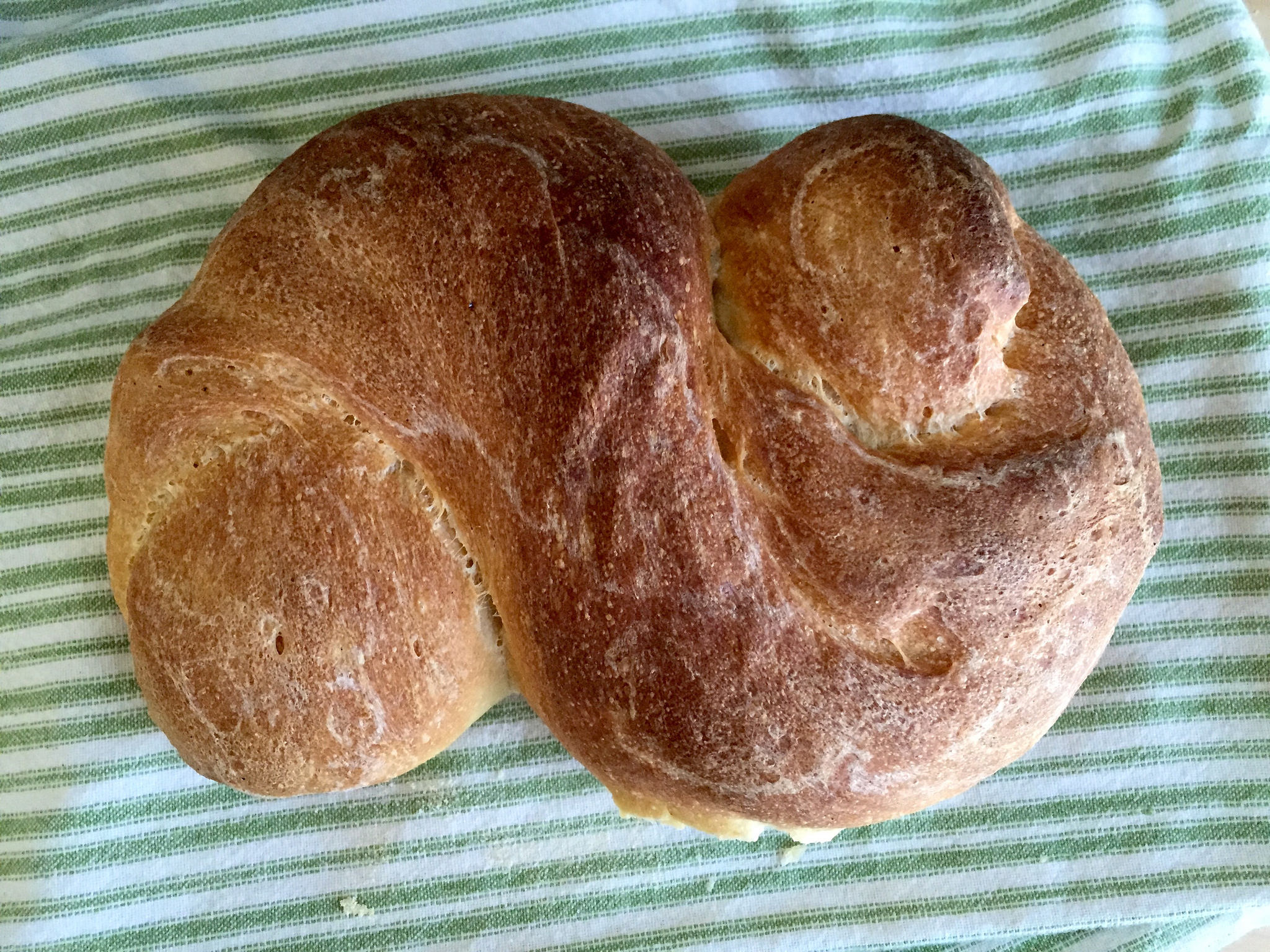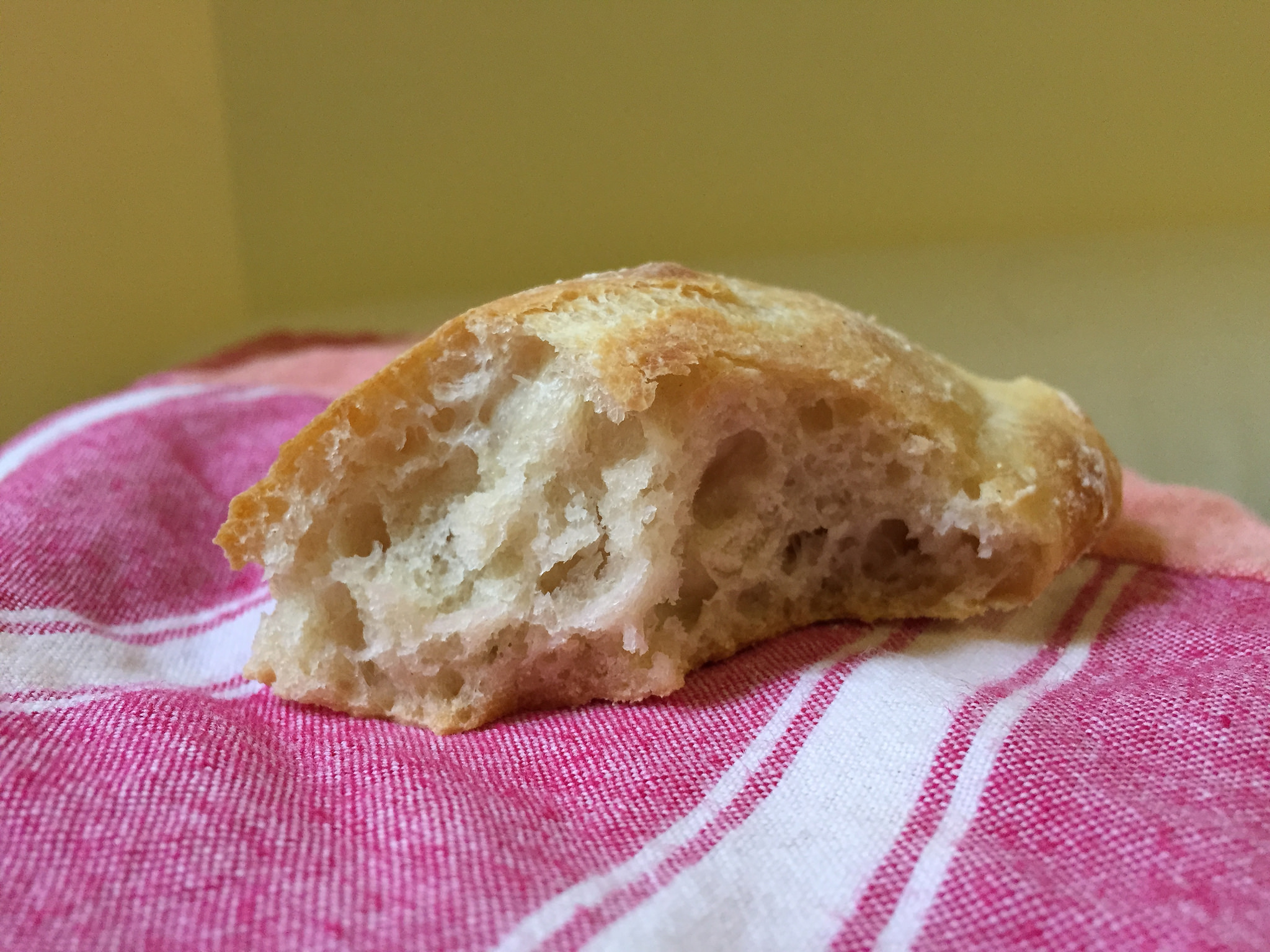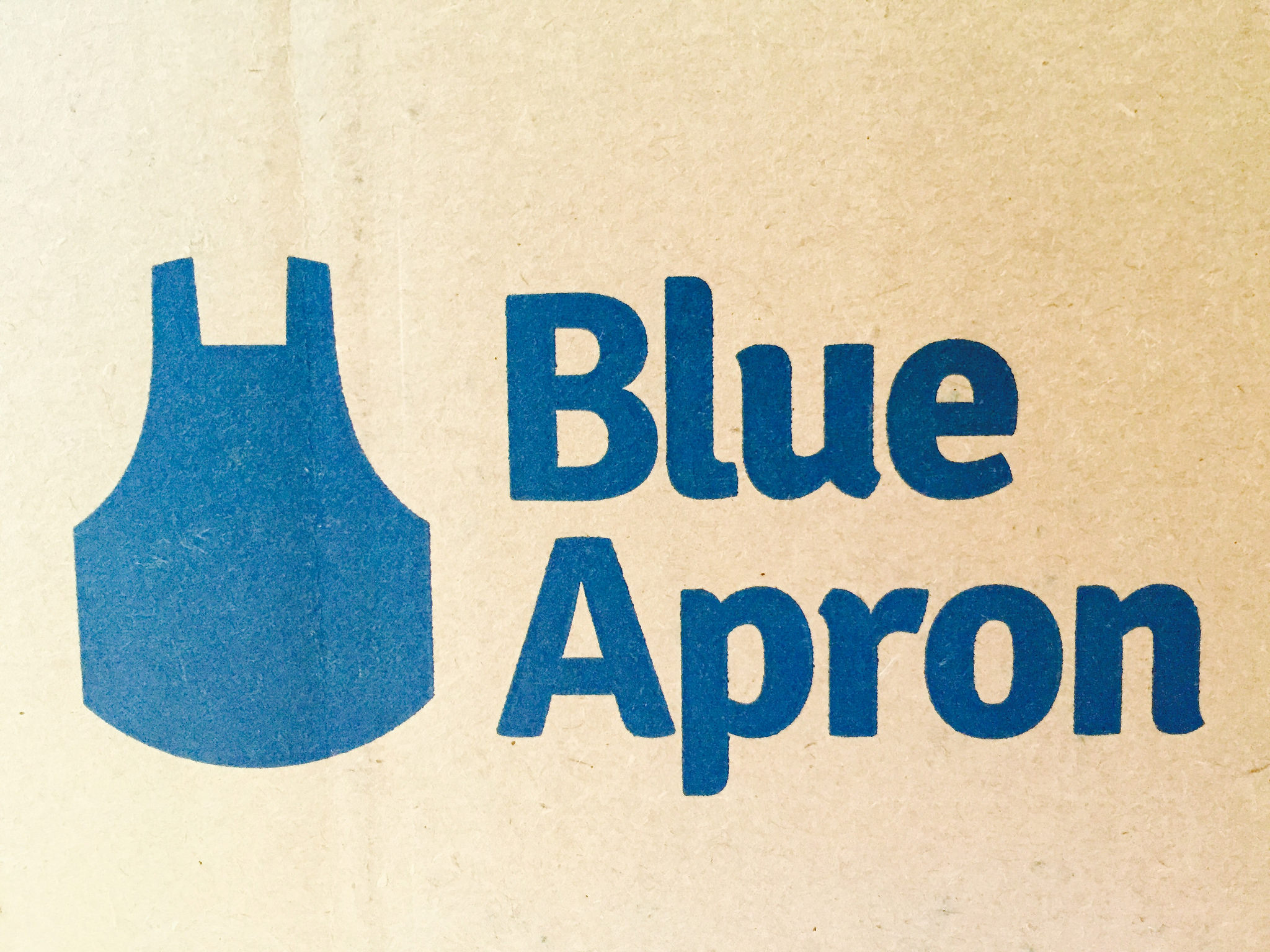Chicken pot pie is one of those dishes for which your lifetime mileage has probably varied. There are your run-of-the-mill, ready-made pre-frozen pot pies, with a minimal amount of substantial filling and a dry, flavorless crust. There are your butter-drenched restaurant versions (not that I’m one to hate on butter). And there are homemade ones, with (hopefully) fresh ingredients and a hearty filling.
This is one of those recipes that I’ve tweaked almost as many times as I’ve made it. It’s the classic version of a chicken pot pie, stuffed with basic veggies and chicken meat wrapped in a white sauce, with a couple additions to make it a little more delicious. I’ve swapped out basic bechamel (or the traditional canned cream of chicken soup) for a garlic bechamel spiked with a bit of paprika and pepper to keep it from being too bland. Instead of a standard pie crust, I’ve flipped crust on top in the form of mini buttermilk biscuits. While I’ve done big, hefty biscuits on the top in the past, cutting the biscuit dough into smaller pieces has a couple benefits. The biscuits (biscuit-ettes?) cook faster than their big biscuit brothers, which keeps the chicken in the filling from drying out. And the biscuit-to-filling ratio seems to work out a little better with a well-dispersed dough.
Chicken Pot Pie
For Filling:
- 2 lbs bone-in chicken legs, cooked and meat removed (see cooking notes below)
- 3-4 medium carrots, cut in half length-wise and thinly sliced
- 2 celery ribs, thinly sliced
- 2 shallots, or 1/2 yellow onion, diced
- 1 1/2 cups green peas (I use frozen; there’s no point in diminishing the perfect simplicity of fresh green peas by cooking them heavily)
- 1/2 cup chicken broth
For Garlic Bechamel:
- 2 Tbsp butter
- 2 Tbsp flour
- 1 cup milk
- 3 cloves garlic, finely chopped or smashed
- Paprika, to taste
- Salt & pepper
For Biscuits:
I’ve used a variety of biscuit recipes over the years, and quite frankly it mostly comes down to finding a good ratio of basic ingredients and then executing them quickly. This is Smitten Kitchen‘s buttermilk biscuit recipe (halved).
- 1 cup plus 2 Tbsp all-purpose flour
- 1 tsp sugar
- 1/2 Tbsp baking powder
- 1/2 tsp salt
- 1/2 tsp baking soda
- 4.5 Tbsp chilled unsalted butter
- 1/2 cup plus 2 Tbsp (~88 ml) buttermilk (see cooking notes)
- Preheat oven to 400F.
- For the pot pie filling, melt 1 Tbsp butter in a medium-sized dutch oven or saute pan. Add shallots, carrots and celery, and cook over medium-high heat until onions are translucent. Add chicken meat, peas, and chicken broth and cook until broth is simmering, stirring well. Let the mixture sit off heat while you are making the bechamel.
- To make the garlic bechamel, melt 2 Tbsp butter in a small saucepan over medium-low heat. When the butter has melted, whisk in flour, 1/2 Tbsp at a time. The flour will thicken into a stiff paste relatively quickly. For a nuttier flavor, keep cooking the roux over low heat, stirring frequently, until light brown.
- Drizzle the buttermilk into the roux a few tablespoons at a time, whisking constantly as you do. The mixture should thicken slightly between each addition. When most of the milk is incorporated, add the minced garlic. Add the remaining milk and whisk until the sauce is thick (it should coat the back of a spoon easily). Add salt, pepper, and paprika to taste (and you should be tasting).
- Fold the bechamel into the chicken and vegetable mixture until it is evenly distributed throughout. Taste the mixture and add salt and pepper to taste (everything is cooked through, so don’t be shy about taking healthy — that is, hefty — samples).
- To make the biscuits, whisk together the flour, salt, sugar, baking powder and baking soda in a mixing bowl. Cut in cold butter until the largest butter bits are the size of peas. Hey, you don’t even have to eyeball it with this recipe, because you *have* peas right there to compare your butter chunks to!
- Make a well in the middle of the flour mixture, and pour the buttermilk in. Use a rubber spatula to fold the buttermilk into the flour, until a dough ball forms.
- Lightly flour a cutting board, then transfer the dough ball to the cutting board and press into a disk, about 1″ thick. With a sharp knife, cut the dough disk into a grid of biscuits about 2″ square.
- Arrange the biscuits over the top of the pot pie mixture, leaving some room for them to spread.
- Cook the chicken pot pie in preheated oven for 12-15 minutes, or until biscuits are golden and cooked through. Let sit 10-20 minutes before serving.
Notes:
My favorite way to cook the chicken for this recipe is to throw the legs — skin on — into the slow cooker with some onions, garlic, salt and water and simmer on low for 8 hours. The meat will fall off the bone, and you’ll have made your broth as well. Obviously this requires an extra day of prep; otherwise you can use about 1 – 1.5 cups of cooked, diced boneless chicken from whatever part of the chicken you are partial to.
Buttermilk is something I absolutely never have on hand. I usually do a mix of about 1/3 cup sour cream and 2/3 cup milk per cup of buttermilk, but the usual suspects of buttermilk substitution (vinegar + milk, lemon juice +milk) will work here. Feel free to use buttermilk if you have it, but personally this begs the question, “who are you and what are you using so much buttermilk for?”












